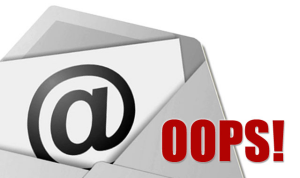Common Mistakes with Email Marketing Campaigns and How to Fix Them
 One of the best ways to utilize your marketing automation software is to engage leads directly through automated email marketing campaigns, tailored to gradually entice the lead through specific lead nurturing programs. Of course, the modern consumer receives an enormous amount of email every day, so you need to make sure that emails your marketing team sends out get noticed. Here are some common mistakes with email marketing campaigns, and some good ways to fix those problems.
One of the best ways to utilize your marketing automation software is to engage leads directly through automated email marketing campaigns, tailored to gradually entice the lead through specific lead nurturing programs. Of course, the modern consumer receives an enormous amount of email every day, so you need to make sure that emails your marketing team sends out get noticed. Here are some common mistakes with email marketing campaigns, and some good ways to fix those problems.
Bad or Misdirected Content
If you have placed a lead in a lead nurturing campaign, then one of your most important struggles isn’t getting them to open the first email – it’s to get them to open all the ones that will follow that first one. It may seem obvious, but you need to ensure that all of the content you send to your leads is strong, readable and engaging, or else your leads may lose interest with your company before they reach a point where they are ready to buy.
A related problem is sending content that isn’t appropriate to the person receiving it. If your marketing automation has scored your lead as not yet interested in your product, don’t try to over pitch them. Your content should be informative, helpful and there to remind your leads that you’re out there, ready to assist them. However, if your lead looks like they might be ready to purchase your services, then make sure you’re ready with well written, compelling content that will convince them to buy!
Some marketing automation software, such as Lead Liaison, can even help you craft email marketing campaigns that target extremely specific demographics. Lead Liaison’s software can look through social media profiles to find information about your leads interests, which would let you, for example, send out a deal that was tied to a baseball event and specifically sent to baseball fans.
Email That Is Not Optimized For Mobile
Another common mistake in email marketing campaigns is failing to optimize for mobile devices. Mobile devices are quickly becoming one of the most common ways that consumers read their email, and if your emails are not optimized for mobile devices, it makes them that much more likely to be ignored. Make sure that any images you’ve included will scale appropriately, that your text displays in a readable size and font, and you’ll find your email marketing campaign will bring you much more success.
Ineffective Call To Action
The last common mistake in email marketing campaigns that you should keep track of is a sloppy or ineffective call to action. If your marketing automation software indicates that your emails are being read but you are seeing poor conversion rates, then the problem could lie with your call to action. Using strong action words, such as buy, click, or register and making sure any images you use have bright colors with high contrast can help make your call to action more effective.
Learn about more ways to make your email marketing campaign, and other marketing automation strategies, more effective at Lead Liaison’s marketing automation resource blog.







